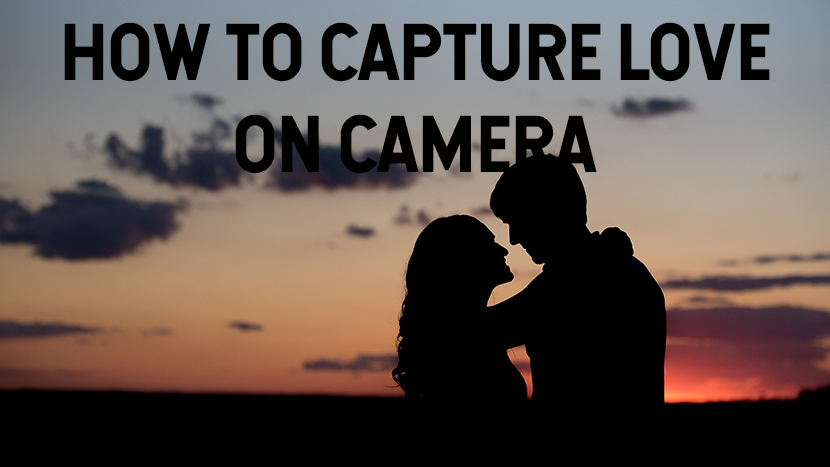Behind the Lens: How Cinematography Enhances Love Stories in Film
Lights, camera, romance! In the world of cinema, love stories have a unique ability to captivate our hearts and transport us to a world of emotion and connection.
But what often goes unnoticed is the artistry of cinematography, the craft of visual storytelling, and how it enhances the magic of love stories on the silver screen. In this article, we’ll take you behind the lens to explore how cinematography plays a pivotal role in making love stories in film truly enchanting.
Setting the Mood with Lighting
Lighting is a cinematographer’s paintbrush, and when it comes to love stories, it’s used to set the mood and evoke emotions. Different lighting techniques can create a wide range of atmospheres, from the soft glow of candlelight in a romantic dinner scene to the golden hues of a sunset during a passionate kiss.
Consider the classic scene of lovers meeting under a streetlamp on a rainy night. The soft, diffused light creates an intimate and dreamy ambiance, highlighting the connection between the characters. Cinematographers use various lighting techniques to emphasize the chemistry and emotions between the protagonists, drawing the audience deeper into the love story.
In addition to artificial lighting, natural light plays a significant role in love stories. Sunrise and sunset scenes often symbolize the beginning or culmination of a romantic journey. The warm, natural light enhances the authenticity of the emotions portrayed on screen, making the love story feel more genuine and relatable.
Framing Love: Composition and Camera Angles
Cinematography isn’t just about what’s in the frame; it’s about how it’s framed. The composition and camera angles chosen by cinematographers can emphasize a love story’s intimacy, vulnerability, or grandeur.
For intimate moments between lovers, close-ups are often used to focus on facial expressions and body language. These shots allow the audience to feel the intensity of the emotions exchanged between the characters. When two people share a kiss, a close-up shot of their locked lips conveys the passion and tenderness of the moment.
On the other hand, wide shots and expansive landscapes can symbolize the epic nature of love stories. Think of the iconic scene in “Titanic” where Jack and Rose stand at the ship’s bow, surrounded by the ocean’s vastness. The wide shot captures their love and underscores the magnitude of their adventure.
Cinematographers also employ creative camera angles to enhance love stories. Low-angle shots can make characters appear larger than life, symbolizing their heroic love. High-angle shots can portray vulnerability or submission, revealing the power dynamics within a relationship. These angles subtly communicate the nuances of love and attraction.
Music: The Heartbeat of Love Stories
Imagine your favorite romantic film. Now, try to recall a particularly emotional scene from that movie. Chances are, the music played a pivotal role in intensifying the emotions you felt during that moment. Music is the heartbeat of love stories in film, and it has the remarkable power to convey feelings that words alone cannot express.
In the realm of love stories, music serves multiple purposes. First and foremost, it amplifies the emotional impact of key scenes. A gentle, melodic tune can enhance the tenderness of a love confession, while a soaring orchestral score can elevate a grand romantic gesture to epic proportions. In essence, music is the emotional glue that binds the audience to the characters and their love journey.
Furthermore, music reinforces the themes and motifs of the love story. Just as cinematography uses visuals to create symbolism, music employs melodies and motifs to evoke specific emotions and associations. For example, a recurring musical theme that plays whenever the protagonists are together can become an auditory symbol of their love, making its reappearance in later scenes all the more poignant.
Lastly, music can be a narrative tool that guides the audience’s emotional experience. The choice of music—whether it’s a sad ballad during a heartbreak or an upbeat track during a joyful reunion—provides cues on how the audience should interpret and feel about the unfolding love story. Music guides our emotional journey, signaling when to rejoice, grieve, or hold our breath in anticipation.
In summary, the role of music in love stories is multifaceted. It intensifies emotions, reinforces themes, and guides the audience’s emotional experience. Through its harmonious melodies and evocative compositions, music becomes an inseparable partner in storytelling, ensuring that love stories resonate deeply with our hearts.
Dialogue: The Words That Stir the Soul
While cinematography and music create the visual and emotional landscapes of love stories, the dialogue—the words spoken by the characters—gives depth and authenticity to the romantic narrative. In cinema, dialogue is the verbal expression of love, and it plays a vital role in shaping the dynamics between characters and advancing the plot.
First and foremost, dialogue is the vehicle through which characters articulate their feelings and emotions. Love confessions, declarations of commitment, and heartfelt apologies all find their voice through the spoken word. These moments of vulnerability and sincerity are at the core of any compelling love story. They allow the audience to witness the innermost thoughts and desires of the characters, forging a deeper connection with their journey.
Moreover, dialogue is instrumental in defining the personalities and motivations of the characters. The way characters speak, their choice of words, and their unique expressions of love contribute to their individuality and complexity. A witty exchange of banter can reveal the playful chemistry between lovers, while a heartfelt monologue can provide insight into the depths of their passion.
Dialogue also serves as a tool for building tension and conflict within love stories. Miscommunications, misunderstandings, and heated arguments often stem from the words characters choose or fail to say. These conflicts drive the narrative forward, adding layers of drama and complexity to the relationship.
In essence, dialogue is the lifeblood of love stories, infusing them with authenticity, depth, and drama. It is through the spoken word that characters bare their souls, define their identities, and navigate the intricacies of love. When crafted with skill and sensitivity, dialogue transforms the written script into an emotional symphony that resonates with audiences.
Time: The Unseen Character in Love Stories
Time is a silent but omnipresent character in the world of love stories. It shapes the narrative, influences character development, and adds layers of complexity to the romantic journey. Love stories often play with time in various ways, weaving it into the fabric of the narrative to enhance the emotional impact.
One of the primary ways time influences love stories is through pacing. The passage of time can heighten anticipation and longing. Think of the moments when lovers are separated by distance or circumstances, and the audience is made to wait for their reunion. This delay intensifies the emotional connection between the characters and the audience, making the eventual reunion all the more gratifying.
Time also serves as a means of character development. Love stories frequently span significant periods, allowing the characters to evolve and grow. This transformation is especially evident in coming-of-age love stories, where the passage of time marks the transition from innocence to experience. Characters learn, adapt, and mature as they navigate the challenges and joys of love.
Furthermore, time is a narrative tool that can be used to create dramatic tension. Flashbacks and non-linear storytelling allow love stories to explore the past, revealing secrets, regrets, and missed opportunities. These narrative devices add depth to the characters and keep the audience engaged in unraveling the mysteries of the past.
In conclusion, time is an unseen but essential character in love stories. It influences pacing, character development, and dramatic tension. By manipulating time within the narrative, filmmakers craft stories that resonate deeply with audiences, exploring the complexities and enduring power of love across the ages.
Colors of Love: The Role of Color Grading
Color grading is the final touch that brings the visual elements of a love story together. It involves adjusting the colors and tones in post-production to create a specific mood or atmosphere. Color grading can transform a scene from bright and cheerful to moody and romantic.
In love stories, color grading is often used to enhance the characters’ emotional journey. Warm, vibrant colors may dominate during joyful and passionate moments, while cooler tones might be employed during conflict or uncertainty. The choice of colors can evoke specific feelings and intensify the narrative’s emotional impact.
In conclusion, cinematography is the unsung hero of love stories in film. Through lighting, composition, camera angles, and color grading, cinematographers elevate these stories’ romance, passion, and emotions, making them visually captivating and emotionally resonant. So, the next time you watch a love story unfold on screen, take a moment to appreciate the artistry behind the lens that enhances the magic of love in cinema, with emotions so intense, almost like a love spell


































































































